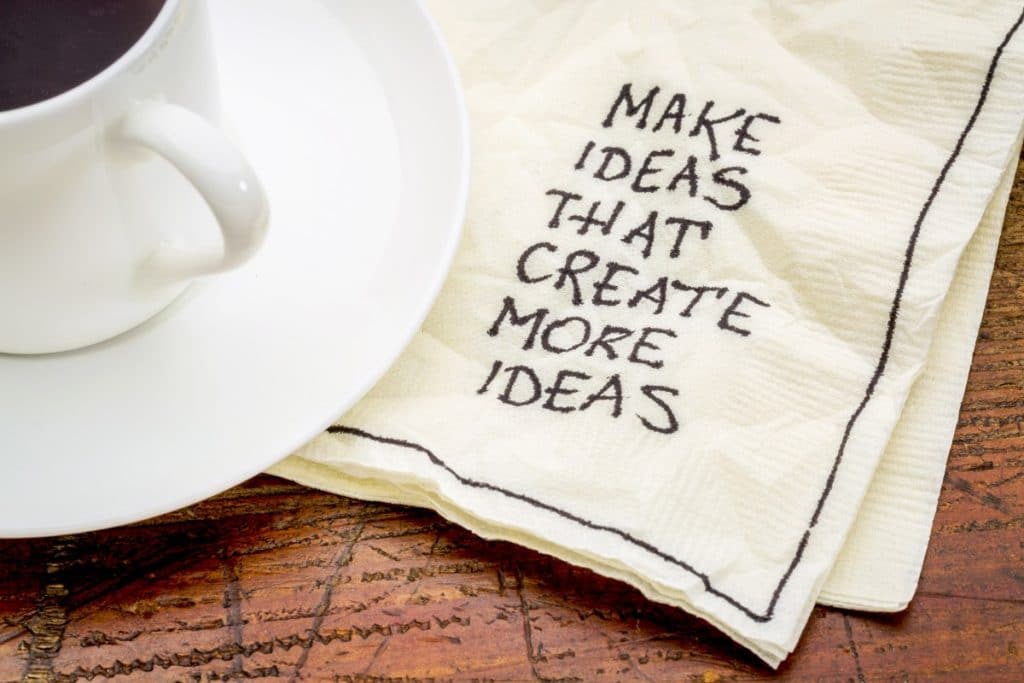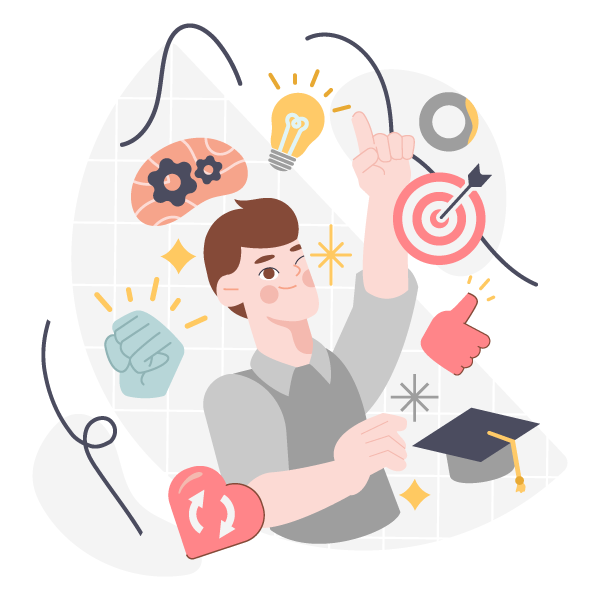Before you accuse us of splitting hairs, we know they sound like the same thing, but they’re not. While it’s tempting to use the terms interchangeably, creative learning and creativity have different meanings when applied to education or learning and development.
Find out how creative learning and creativity are related and how both can increase engagement and retention.
But first, let’s define our central concept for today.
What Is Creative Learning?
Creative learning is not memorizing information. It’s building knowledge and developing skills using creative techniques.
Rather than dictating how information should be absorbed, creative education— guides the learner through the instruction process using creative methods. And it challenges the obvious, the conventional, and the assumed. To some extent, it’s about breaking out of constraints.
However, we’re not breaking boundaries just for the sake of breaking them. No! We’re breaking boundaries for valid purposes— like effectively building a comprehension framework.
Here’s a list of creative learning techniques that you may have heard oft:
- Hypothetical scenarios
- Improvisation (with exercises or games)
- Analogies
- Brainstorming sessions and debates
- Storytelling
Now that you have a general overview of creative learning, let’s go over why it’s effective.
Why Is Creative Learning Important?
Learners engage deeply with creative learning experiences. The more that learners engage with the process,, the longer they retain knowledgeand expand their understanding. But that’s just the beginning. Learning creatively does way more than that.
- Stimulates problem-solving. Creative learning experiences change the way learners approach problems. They become more imaginative andinnovative, and they cope better when they don’t know the answer. Creativelearners start visualizing alternatives or possibilities from different perspectives. This perspective shift allows them to anticipate difficulties and overcome them.
- Develops critical thinking. Learners propose innovative ideas and resolutions. Then, they review the progress of implementing them and adjust the process for improvement.
- Promotes risk-taking. Creative learning exposes learners to failure. They have the opportunity to make decisions and, inevitably, some of them won’t lead to solutions. But learning creatively provides learners with a space where they feel comfortable taking risks and seeing different outcomes. Getting comfortable with “failure” allows learners to take more risks with less fear.
- Builds a curious mindset. Creative learning solutions are unconventional. Unconventional ways of learning make learners curious about the process and the topic and foster learning itself. Creative learning sparks curiosity and discussion and leads learners to interesting insights.
- Increases confidence levels. Creative learning techniques build confidence. The result? Learners are more likely to apply the lessons they learned.
Next, we’ll explore one of the techniques we love the most.
Example of Creative Learning: Instructional Storytelling
Storytelling is a creative learning technique that makes information interesting. It takes the pressure out of the learning experience and improves learners’ attention.
What makes a great story? Think of an object that has sentimental value to you. A cherished souvenir you brought home from a memorable trip will do. Do you remember the moment you bought it and how you felt, with all the sensory details? Do you know why? Because emotions associated with information power long-term memory.
Long-term memory maximizes learners’ attention! Emotions drive attention, and attention drives learning.
Learn more on Instructional Storytelling in our free eBook.
Emotions Are Not Feelings
What exactly is emotion?
Emotions are physical reactions to events that trigger our senses.
On the other hand, feelings are not only physical—like emotions—they’re also mental. And they’re our way of interpreting our emotions. Feelings cause us to pay attention to and interact with the environment around us.
We can use emotions to our benefit. We know that certain emotions cause a certain reaction. And we know that feelings originate from emotions and make us pay attention.
So, what do you need to make your learners stay focused on a lesson that will teach them a new skill?
Emotions Drive Creative Learning
You just need to trigger emotions to grab your learners’ attention. And you can do it with stories! Stories evoke emotions, and emotions guide us.
Therefore, to make a learning experience enthralling and keep learners focused, appeal to the six basic emotions—anger, disgust, fear, joy, sadness, and surprise.
Once you get their attention and they’re open to learning, keep them in that mindset by stimulating emotions such as curiosity, delight, or amusement.
Bottom line: Telling an engaging story is a technique you can use to build a creative learning experience through emotions.
We talked about creative learning a lot so far. But up to this point, we haven’t defined creativity, so let’s do that and distinguish creative learning from creativity.
The Difference Between Creative Learning and Creativity
To think creatively means to develop unique and useful ideas and come up with creative learning solutions. But a learner doesn’t need to be a creative person to participate in that process.
Creativity is how an instructional designer addresses the needs of learners. It’s their ability to envision both available and yet-to-exist solutions to cater to each learner. The goal is that each learner gets the experience they need. For instance, you can use microlearning for on-the-go learners or adaptive learning for those who are fast on their feet.
On the other hand, creative learning is a delivery method. It considers individual learning styles and figures out innovative ways to increase engagement and retention of content.
These are a few premises of creative learning solutions:
- Provide a personal learning environment for each learner.
- Create a learning path to actively involve learners instead of making them passive participants. A learning path prescribes a learner’s own learning, yet it allows them to learn on their own time.
- Mix different learning methods—from microlearning to gamification—to increase overall learner engagement.
It’s time to move on to the next step: designing the creative learning solution.
How to Design Solutions to Learn Creatively
You don’t have to do it on your own! Find a learning organization that has the creativity to develop creative learning solutions.
Learners don’t need to be creative people themselves to enroll in and engage with creative learning experiences. However, those who design and develop the content and the delivery system should be creative and know what to do with it.
A creative instructional designer tailors the solution to the learner and the way they absorb new information. That’s how creativity pays off when it comes to learning design.
Before we go, check out some simple strategies that creative instructional designers use all the time.
Simple Creative Learning Solutions You Can Adopt
If you want to be a creative learner more often, do the following:
- Think of ways you could mess up your current problem. Sometimes, just thinking about the worst possible outcomes sheds light on resolutions.
- Ask yourself how you could make your problem easier. This is the reverse strategy of wondering how you could make your problem worse, but it works the same way. You remove constraints from your problem-solving process and critically analyze alternatives. As a result, you make a choice and move forward with it.
- Keep asking a new question. Brainstorming is about generating ideas. However, it’s more effective to generate questions. By doing so, you delve into your problem more effectively and challenge your own assumptions. This helps spark a multitude of possible resolutions.
Creative Mindsets Last a Lifetime
Creative learning has changed the understanding of entire organizations about training and workplace education.
It applies wherever learning happens. And it generates lifelong learning by nurturing a creative mindset in learners. That’s what makes them eager to keep learning.
By developing creativity skills in learners, you develop professionals who can:
- Welcome others’ views with an open mind
- Constructively inquire
- Use imagination and tenacity to solve problems and innovate
- Be resilient to difficulties
- Tolerate uncertainties with courage
And remember: developing creative approaches to learning is, in itself, a creative process.






